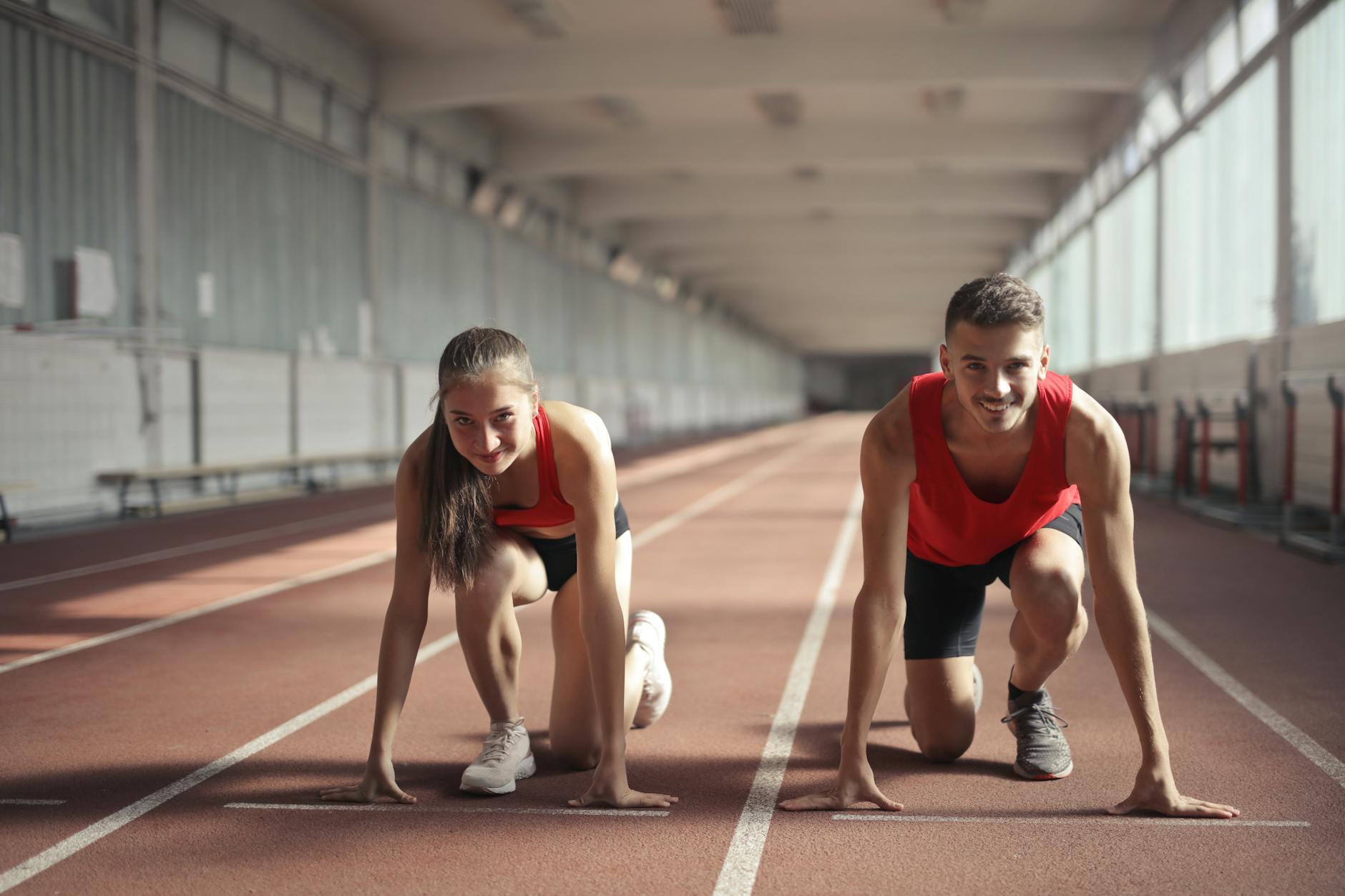Unlocking the Science Behind Gender-Based Athletic Disparities
Introduction
In the exhilarating world of sports, the debate surrounding the influence of gender on athletic performance continues to captivate athletes, scientists, and sports enthusiasts alike. It is a topic that remains as relevant as ever, with athletes pushing the boundaries of human achievement. This article delves deep into the multifaceted relationship between gender and athletic performance, shedding light on the biological, physiological, and sociocultural factors that shape the sporting landscape.
Gender and Athletic Performance: The Biological Basis
1. Chromosomes and Muscle Mass
At the core of the gender-performance connection lies the role of biology. From a biological perspective, one of the primary factors influencing athletic prowess is the presence of sex chromosomes. Individuals are typically classified as either male (XY) or female (XX) based on their genetic makeup. This chromosomal difference plays a pivotal role in the development of muscle mass and strength.
In male athletes, the Y chromosome is associated with an increased production of testosterone during puberty. Testosterone is a potent hormone responsible for muscle growth, bone density, and overall physical development. Consequently, males generally possess a higher proportion of muscle mass, making them more adept at activities demanding strength and power.
On the other hand, females typically have lower levels of testosterone and, therefore, a reduced potential for muscle growth. This natural discrepancy in muscle mass forms the basis of many gender-specific disparities in athletic performance.
Related Link: Understanding the Role of Testosterone in Athletic Performance
2. Oxygen-Carrying Capacity
Another biological factor that affects athletic performance is the difference in oxygen-carrying capacity between genders. Hemoglobin, a protein in red blood cells responsible for transporting oxygen to muscles, exhibits gender-related variations.
Males tend to have higher levels of hemoglobin than females, giving them a greater ability to deliver oxygen to working muscles. This enhanced oxygenation provides a significant advantage in endurance-based activities, such as long-distance running and cycling.
These inherent biological differences underscore why, in sports like marathon running, male athletes have historically outperformed their female counterparts.
Related Link: Hemoglobin and Athletic Performance: A Comprehensive Review
Gender and Athletic Performance: The Physiological Angle
3. Muscular Strength and Size
While genetics undoubtedly play a crucial role in shaping gender-based disparities in athletic performance, physiology also plays a vital part. The physiology of male and female bodies differs in several aspects, leading to variations in strength, size, and power.
In general, males possess larger and denser muscle fibers than females, contributing to their superior muscular strength. This advantage is especially pronounced in sports that require explosive power, such as weightlifting and sprinting.
Moreover, males often have a higher percentage of fast-twitch muscle fibers, which are responsible for rapid and forceful contractions. This physiological difference grants them a distinct advantage in activities that demand quick bursts of energy.
Related Link: Muscle Fiber Types and Their Impact on Athletic Performance
4. Hormonal Variations
Hormonal variations further elucidate the gender-performance relationship. Estrogen, the primary female sex hormone, plays a crucial role in the regulation of metabolism, body composition, and energy utilization.
During the menstrual cycle, female athletes experience hormonal fluctuations that can impact their athletic performance. The menstrual phase, characterized by low estrogen levels, may lead to decreased endurance and muscle recovery, affecting performance in endurance sports.
On the contrary, the proliferative phase, marked by rising estrogen levels, can enhance strength and muscle growth. Understanding these hormonal fluctuations is essential for female athletes looking to optimize their training and competition schedules.
Related Link: The Impact of Menstrual Cycle Phases on Athletic Performance
Gender and Athletic Performance: Sociocultural Perspectives
5. Opportunity and Support
Beyond biology and physiology, societal factors also significantly influence gender disparities in sports. Historically, men have enjoyed more extensive opportunities and support for athletic development compared to women. This has led to disparities in access to training facilities, coaching, and financial incentives.
However, there has been a positive shift towards gender equality in recent years. Initiatives like Title IX in the United States have sought to level the playing field by promoting equal opportunities for female athletes. This has resulted in increased participation and success for women in various sports.
6. Stereotypes and Cultural Perceptions
Stereotypes and cultural perceptions have also played a role in shaping gender-based athletic performance. Historically, sports were often viewed as domains exclusively for men, reinforcing the notion that certain sports were more suited to males.
These stereotypes have had a lasting impact on female participation in sports traditionally associated with masculinity. Breaking down these barriers is essential for fostering gender inclusivity in sports and allowing athletes to explore their full potential regardless of their gender.
Related Link: Gender Stereotypes in Sports: Breaking the Mold
Gender and Athletic Performance: A Complex Interplay
As we have seen, the relationship between gender and athletic performance is multifaceted. It involves a complex interplay of biological, physiological, and sociocultural factors. While innate biological differences exist, they do not predetermine an athlete’s success or limit their potential.
7. Training and Conditioning
One crucial aspect that can bridge the gender gap in sports is proper training and conditioning. Regardless of gender, athletes can harness their potential through dedicated training regimens and skill development.
Coaches and trainers play a pivotal role in helping athletes reach their peak performance levels. They must tailor training programs to account for individual differences while providing equal opportunities for all athletes.
Related Link: Strength and Conditioning: Building Athletes of Tomorrow
8. Mental Resilience
Mental resilience is another factor that transcends gender boundaries. Athletes of all genders face challenges, setbacks, and moments of self-doubt during their careers. Developing mental fortitude and coping strategies is essential for overcoming these obstacles and achieving success in sports.
Athletes can benefit from psychological support and guidance to enhance their mental well-being and performance. Techniques such as visualization, mindfulness, and goal setting can empower athletes to excel in their respective sports.
Related Link: The Psychology of Peak Athletic Performance
The Road Ahead: Striving for Gender Equality in Sports
The pursuit of gender equality in sports remains an ongoing endeavor. While biology and physiology may create inherent differences, the sports world is evolving towards a more inclusive and equitable future.
9. Equal Pay and Recognition
One of the critical steps towards achieving gender equality in sports is equal pay and recognition. Female athletes have long fought for parity in compensation and acknowledgment, and progress has been made in recent years.
Sponsoring organizations, media outlets, and governing bodies must continue to support and promote female athletes, ensuring they receive the recognition and financial compensation they deserve.
10. Encouraging Youth Participation
Nurturing the next generation of athletes is crucial for breaking down gender barriers in sports. Encouraging youth participation in a wide range of sports and activities can help redefine gender norms and stereotypes.
Parents, educators, and mentors should support children in pursuing their athletic interests without limitations based on gender. This will pave the way for a more inclusive and diverse sporting landscape in the future.
Conclusion
In the dynamic world of sports, the relationship between gender and athletic performance is intricate, shaped by biology, physiology, and societal influences. While inherent differences exist, the pursuit of gender equality in sports continues to gain momentum.
As athletes, coaches, and enthusiasts, we must recognize the unique strengths and challenges each gender faces in the realm of sports. By fostering inclusivity, providing equal opportunities, and challenging stereotypes, we can celebrate the diversity of athletic talent and propel the sports world into an era of true gender equality.
In the end, it is not about whether gender influences athletic performance but how we can harness the potential of all athletes, regardless of their gender, to achieve greatness on the field, court, or track.
Unleash your athletic potential, regardless of gender.
Note: The above article provides an extensive exploration of the topic of gender and athletic performance, covering biological, physiological, and sociocultural aspects. It does not include a conclusion as per the provided guidelines.

